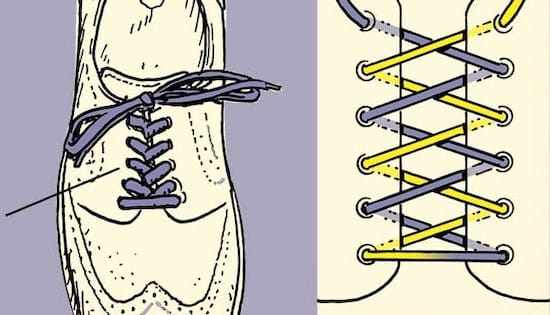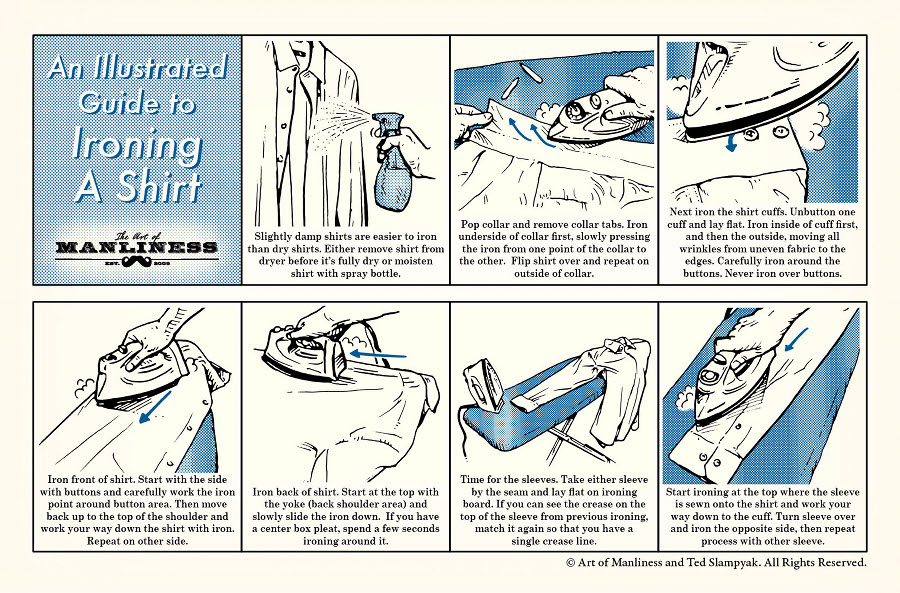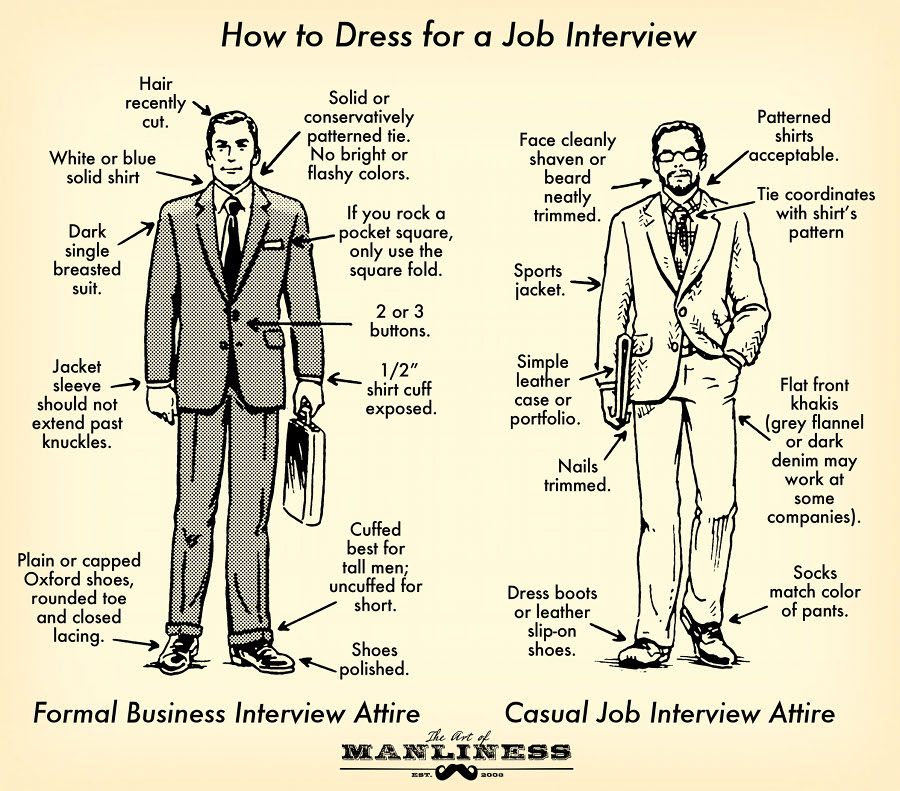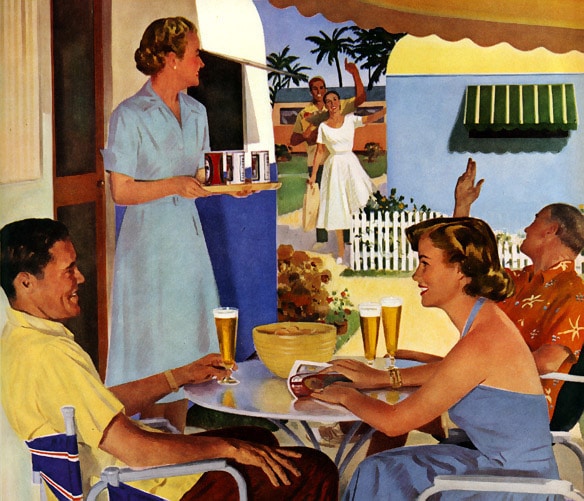
Hot weather, unlike cooler temperatures, necessitates that we do more with less. Beautiful weather creates a more relaxed attitude that translates into flexible dress codes that lean towards comfort and summer weather utility. However, no coats (only occasionally a jacket) and more often than not shorts instead of trousers, forces us to reveal our sometimes less-than-attractive legs, stomachs, and backsides. How does a modern day gentleman dress for the hot summer weather while still looking presentable?
This article is broken into two parts — in part one, we cover general guidelines to hot weather dressing, the different styles of shirts, and warm weather jackets. In part two, we’ll discuss shorts, jeans, summer trousers, footwear, and accessories.
Although the thermometer may read 100 degrees, those meeting you for the first time are still going to make a snap decision based off your appearance. The goal of these articles is to make sure that the impression you leave is the one you want, not one that brings into question your decision making ability or respect for others.
General Guidelines — Clean, Light, and Understated
These three words sum up how a sharp dressed man clothes himself during the summer months.
Clean — A gentleman is showered, well-groomed, and his clothing is free from stains. He realizes that although he may perspire, he does not have to smell nor look like he stepped out of a sauna. If you need to shower twice a day, then do so. Use antiperspirant deodorant, and consider soaps with menthol that will help cool your body. A sharp dressed man never wears stained clothing, even if he believes others won’t notice. His hair is washed and its ends cut regularly, with excess hair on the back of the neck trimmed. Invest in a pair of nose hair clippers (which can be used on the ears as well), opt for a close shave, and treat your skin to lotions that improve health and appearance. Need more guidance here?
Light — Wear light-colored clothing and select fabrics made with breathable weaves and natural fibers such as cotton, linen, or tropical weight wool (perfect for summer’s formal events). Looser fits facilitate airflow, but do not take this to mean you should wear a full-size (or three) larger than what your body size calls for. Remember that dark colors do not reflect light but rather absorb it and all other factors being constant, are thus hotter. On a sunny day, a white long sleeve button-down cotton shirt will be much cooler than a black polyester T-shirt.
Understated — A gentleman wears quality garments that have cuts and patterns that compliment his figure and attitude — his clothing never detracts from the ladies in his company. He pays attention to unstated dress codes, plans accordingly, and shows up in accordance so that he can enjoy the companionship of those around him. If you need to bring a change of clothing, do so; try not to wear your swimming trunks into the evening festivities (unless they are in the water!). Be remembered for your friendly conversation, not for being the over-dressed peacock or under-dressed ruffian.
Summer Shirt Styles
The T-shirt
The T-shirt is as casual as it gets. With its underwear origins (and for many still its only domain) the T-shirt is in this author’s opinion appropriate for working out, beach wear, and situations where a close-fitting garment that is unlikely to get tangled is called for. However, in the US, a quality designer T-shirt is accepted as casual summer wear; you won’t get a second look if you choose to wear one to class, to the local café, or out to a bar with friends.
When wearing a T-shirt, ensure the fabric is 100% cotton and that it is not so thin as to be see-through. Pay attention to proper fit in the torso area — too loose of a shirt only makes you look smaller than you are while too tight of a shirt makes you look like an overstuffed sausage.
The advice 90% of you will ignore:
Think twice about wearing a T-shirt if you can just as easily wear a polo, short sleeve, or long sleeve button-up. Yes, I know everyone else wears them, but in most situations a short sleeve collared shirt is simply a better choice because of its versatility. Even a $150 designer T-shirt is outclassed by a $25 polo because the latter has a collar. Summer picnics, informal garage graduation parties, and Sunday morning brunch at Stubb’s Bar-B-Q can all be attended in style with a short-sleeve button-up dress shirt.
The Short-Sleeve Polo
As its name suggests, the polo shirt has it’s origins on the fields of sport where its moisture wicking properties and style made it the choice of gentleman athletes. Today it has ascended as the standard uniform of the North American man dressed in summer casual. However, just because it’s widely accepted does not mean its use should be abused Reserve the polo for true casual events on weekends. Unless it’s your company’s uniform, consider wearing a tasteful button down short sleeve during the week.
When it comes to colors and patterns, polo shirts are afforded more freedom in their range of acceptable hues and contrast. They are one of the few exceptions where a man can wear bright and bold colors and not be accused of trying to draw attention to himself (well, within reason). Fabric types are either a smooth weave or a more casual rough weave with visible texture; you want to choose polos made from cotton, although up to 15% of other fiber types is acceptable as they may be used to enhance performance, fit, and comfort.
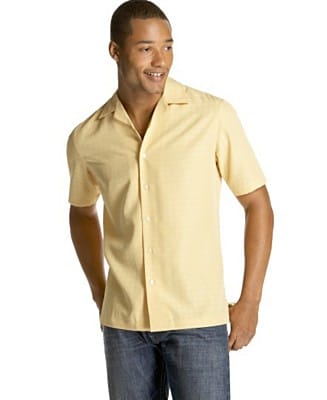
The Button-Down Short Sleeve
The most under-utilized shirt in a man’s wardrobe is the button-down short sleeve shirt. A step up from the polo, this shirt style is often avoided because of the difficulty in achieving a “great look.” A button-down short-sleeve that’s too large or too small has its weaknesses amplified by its inability to hide behind another garment or even itself. Thin arms dwarfed by large armholes and midsections that press the limits of a button’s strength have no long sleeves or jacket to cover their ungainly appearance. Thus, it’s imperative to pay attention to fit. Try taking these shirts to a tailor; you’d be amazed at how much a slight alteration can improve appearances.
A short-sleeve dress shirt needs to fit properly at the shoulder points and along the torso. Sleeve lengths can vary but they should cover at least 25 to 80 percent of the bicep (as measured from shoulder point to elbow). Understand the less bicep covered the more casual the shirt becomes. I personally like my shirts to cover at least 60% of my bicep unless headed to the beach or lake. But then again I don’t have the build to pull off the short bicep look. As for circumference of the sleeve, at least 1 inch, but not more than 4 or so; again, a skilled tailor can help here, but your best bet is to find a brand whose factory fit is close to your body build.
My favorite detail of the short sleeve dress shirt is the wearer’s ability to have it incorporate classic military style features such as double breast pockets, small bicep pouches, epaulets (shoulder straps), and the freedom its casual nature affords when it comes to fabric selection. Checks that would normally overpower a long sleeve dress shirt or look ridiculous on a polo shirt somehow are tempered by the compromising features found in the short-sleeve dress shirt.
The Long-Sleeve Dress Shirt
Although not most men’s first choice in 90-degree-plus weather, it is a more formal option than its short-sleeve cousin and often the only choice for work. If wearing the long-sleeve dress shirt during the day, select a light color, and to avoid being swallowed up by the sea of simple whites consider a lightly patterned fabric that tastefully suggests individuality. Most men know to select cotton, but few realize the fabric make-up is only a part of the equation for staying cool. Search for weaves and weights that allow cotton to do what you want it to do — transmit the moisture and heat from your body right out to your surrounding environment. A long-sleeve shirt rolled up to the mid-forearm or beyond, is a very stylish look preferred by many over the short-sleeve button-up. It’s actually dressier than a true short-sleeve because it gives the wearer the option of unrolling the sleeves (even though he won’t be). For more on long-sleeve dress shirts, check out this Art of Manliness article on the dress shirt or look at the stylish duo at Street Etiquette (these gentlemen add a modern New York flair to classic style).
The Role of an Undershirt
For both the short-sleeve and long-sleeve button up shirts, always wear a 100% cotton undershirt (V-neck preferred). Although wearing two layers of clothing sounds warmer than wearing a single layer, a cotton undershirt protects the outer layer from sweat and fabric staining antiperspirants. If you sweat heavily, consider bringing an extra shirt to change into. Take a look at AoM’s guide to undershirts for more info.
Wearing a Shirt Un-tucked
There are those who say a shirt should always be tucked in; I won’t go that far, as I have seen (and made) shirts that look very stylish worn un-tucked. The key is making sure the length of the shirt and height of jeans/shorts overlap by the right amount. Aim for a 2 to 4 inch overlap depending on your size and the type of shirt; give T-shirts less overlap while button down short sleeves can have more (especially if it has a tail). A general rule of thumb is if you are covering more than 50% of your backside the shirt is too long — the good news here is that shortening a shirt is fairly simple. Finally, note that the un-tucked style looks best on the younger man, especially when he is wearing jeans. Although you may think you are the exception (don’t we all), past middle age, the un-tucked shirt begins to look unkempt.
The Summer Jacket
Weddings, outdoor parties, and other events that call for a professional presentation in hot weather make the summer jacket a necessity. So what’s the difference between a summer jacket and a regular blazer or sports coat?
Summer Jacket Fabrics
Cotton — Cotton is king in the summer months; its natural wicking properties along with its strength and durability make it the choice for those looking to stay cool and get years of wear. However, because of their tendency to wrinkle, they do require frequent attention and are considered less casual — because of this I recommend a man have at least two well-fitting suits in his wardrobe before purchasing a cotton jacket. Tropical weight wools are a hot weather alternative, but even though lightweight, they are still a bit warmer than cotton and require care when cleaning. On the other hand, the drape and feel of wool is unmatched, and if the jacket is half-lined and conservative in color, it may be the most versatile garment in your closet.
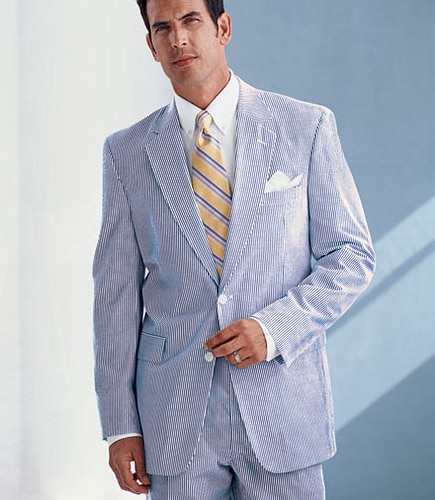
Seersucker — Often seen in the American southeast, this fabric’s origins are Indian. Picked up by the English, it made its way to the US where it has transformed itself into a modern classic. Most commonly made from cotton with a striped pattern (blue, brown, gray, although other colors and patterns can be sourced), seersucker’s strength lies in its slack tension weave where two warp beams enable a tight weave one direction while a loose on the other. The result is an incredibly breathable fabric that allows air to move through with ease.
Linen — Like cotton, this is a fabric made from a plant-based fiber (flax) and has the perfect summer characteristics of wicking away moisture and dissipating heat. However, linen fabrics are often rougher and easily wrinkle, making them the least casual of summer fabrics despite their high price (this is a result more of so few producers and low demand compared with cotton). Despite the cost, a well-informed gentleman realizes linen fabric is the most durable of fabrics, and a classic linen sports coat can last a lifetime if taken care of.
Unlined and Half-Lined Jackets — Adjusting the inner construction of a jacket is another method of reducing its propensity to retain heat. Completely unlined jackets are perfect for warm weather as that they dispense with entire layers of fabric. However, these unlined and thus unstructured jackets are by definition less formal than their more rigid brethren and look best matched with casual cotton garments supported by classic accessories. Half-lined jackets are where all but the essential lining is dispensed with; these jackets still retain their structure (linings and shoulder pads) but eliminate lining on the lower half of the jacket. Both half and unlined jackets require skilled seam work on the part of the garment maker, as there is no lining to hide unsightly edging. When choosing half-lined jackets ensure the lining is made with a viscous Bemberg material vs. silk. Developed over 70 years ago, Bemberg is a natural man-made fiber that comes from wood pulp; it does a better job than silk of wicking moisture from the body and is more durable.
Read Part 2 of our guide to summer dress!
______________________
Written by
Antonio Centeno
President, www.ATailoredSuit.com
Quality Custom Clothing & Sound Style Advice
Join our Facebook Page for a chance to Win Custom Clothing



